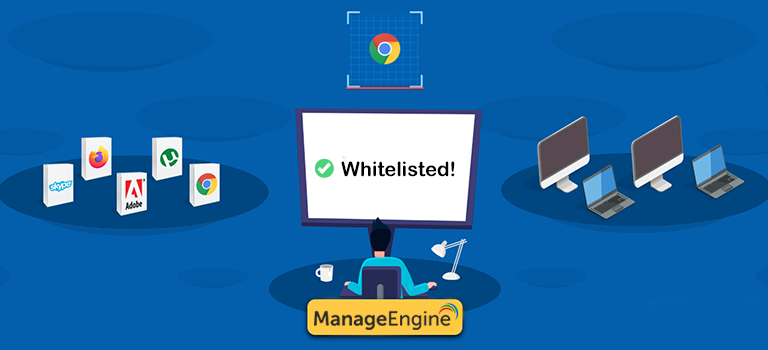Application control, an integral step in achieving comprehensive endpoint security, often comes with implementation difficulties. Many organizations prioritize productivity issues over security issues, and tend to postpone taking the required measures to ensure their infrastructure is continually secure. However, if effectively executed, application control is a valuable addition to any organization’s security framework.
Here are five key recommendations to ensure implementing application control in your organization is seamless:
1. Invest in a Smart Solution
The most crucial element in assuring an organization’s success with application control is choosing the right solution. Factors to consider include the ease for your sysadmins to deploy and utilize the software, as well as customization options. Your selected solutions should provide flexible features that allow you to tailor make your application control approach, while still ensuring only authorized access is allowed to corporate applications and data.
2. Extensive Discovery and Simple Categorization
Sysadmins require a clear picture of the entire application network before they proceed to list building. The chosen solution should thoroughly scan the infrastructure to discover all applications in network endpoints. Sysadmins can also feel overwhelmed by the volume of application data. Being able to categorize apps and executables by vendor, product name, and endpoint group is imperative.
3. Rule-based Efficient List Building
Control list building and updating is a necessary but an exhausting process. If not performed carefully and routinely, operational glitches, downtime, and the need for excessive help desk support can result. Choose a solution that automates the list building process to simplify implementation. Select software that enables you to set various rule type preferences so you can designate application whitelists and blacklists. This can enable an application to be automatically added to a list if it satisfies the rules set when it is installed. Some solutions also provide default trustworthy whitelists that can be deployed with minimal changes.
4. Target-based Association
After observing the discovered set of applications, determine and qualify which users will need access. Group target devices that need similar applications. This can be performed based on role, department, or the assigned access privilege level. This way, all users will only have access to applications that are absolutely necessary in their role. Limiting application access, along with minimizing the attack surface, reduces organization-wide maintenance efforts, as there would be fewer applications to manage.
5. Phased Application Control Approach
Rolling out control rules in a phased manner is vital. Policies applied haphazardly or inadvertently might leave users without the ability to access critical apps. Once a rough idea of the users and their needs are formed, it is best to strictly blacklist dangerous apps and deploy other whitelist policies in an observe-only mode. This enables organizations to audit policies before actually implementing them. In this observe-only mode, every time an app that is not on the whitelist is run, a log will be generated instead of the app being instantly blocked. The solution chosen must provide quick and efficient discovery functions and remediate gaps in the deployed whitelist policies. Once the sysadmins are confident, they can switch to a stricter phase of application control that only allows whitelisted apps to run, ensuring heightened security.
If the chosen solution checks all these boxes, a robust application control can be implemented seamlessly for your organization. This will simultaneously enhance productivity, instead of causing productivity drops as might be anticipated.
conclusion: application control
ManageEngine’s Application Control Plus, a comprehensive software for endpoint security, addresses all these facets. It comes pre-configured with an endpoint privilege manager that can assist organizations in the enterprise-wide enforcement of the principle of least privilege, along with providing isolated application-specific elevation when required. Application Control Plus also features just-in-time access, child process control, and more. Download your free, 30-day trial today!
Ameera Azeez
Tags: AppSec, Cybersecurity, Data, EndpointSecurity, ManageEngine, Security, Technology


